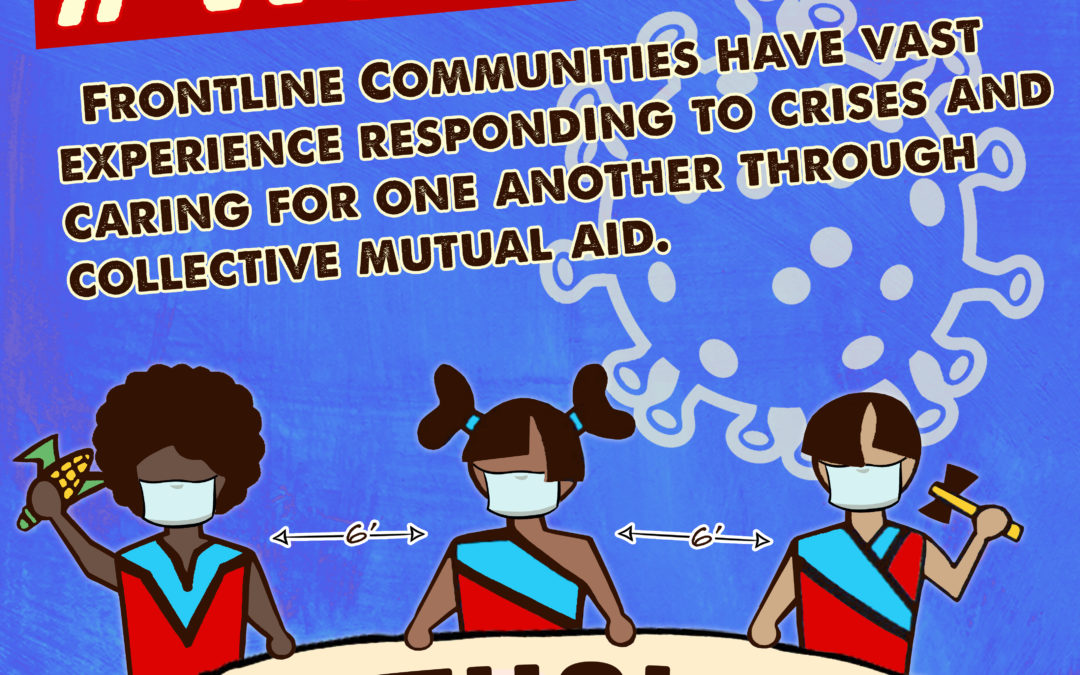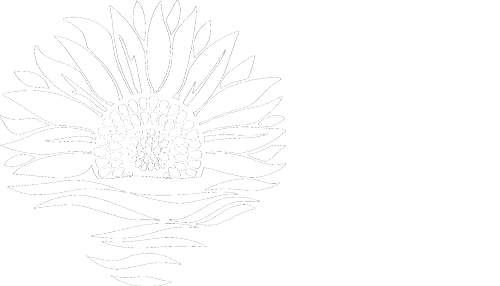Principles of Mutual Aid
If you’ve been following how people are responding to the pandemic, you may have seen the words “mutual aid” show up in the news and across communities. That’s because “mutual aid networks” are springing up from the quick work of organizers trying to make sure their neighbors have access to what they need to survive given the failures of our government to provide an intact social safety net.
While folks from neighborhoods that have faced social and environmental injustices or climate disasters may already be quite familiar with mutual aid, for some of us, this is a new term.
Mutual aid consists of the collective actions it takes to support community wellbeing and reaffirm that all lives have inherent value. We all have needs and we are all capable of helping each other to fulfill some of these needs. This approach is distinctively egalitarian and rooted in reciprocity and agency.
A common principle of mutual aid is “solidarity, not charity.” Charity has an inherent imbalance; it moves resources from places of abundance to places deemed as needy, a deficit-based perspective instead of one based on the values and abundance already present within communities. It also places agency in the hands of the “giver” to decide who is most “deserving” of support. In fact, sometimes charity can do more harm than good because often people outside of the community dictate what the community itself needs rather than based on what the community itself knows it needs.
Mutual aid networks often grow from the cracks formed by incohesive public and private sector responses that fail to meet the needs of all people. The lack of a coordinated deployment of resources from national to state and local levels leaves frontline communities no other choice but to gather and share whatever they do have with each other — as the saying goes, “make a way from no way.” The community grows an ecosystem of ways to take care of itself when systems and institutions fail to or even cause them harm.
Right now, this shows up in neighbors setting up meal delivery and grocery schedules for elderly community members or people with disabilities. This shows up in translation of public health resources into multiple languages when municipal agencies fail to do so. This shows up in organizing personal protective equipment donations to local healthcare establishments and sewing masks or creating hand sanitizer to give to neighbors without.
This shows up in volunteers signing up to serve school meals or to serve meals to essential workers. This shows up in people housing displaced folks or people without homes. This shows up in folks organizing to hold the government accountable for its responsibility to meet the needs of the people.
However, we shouldn’t forget that mutual aid has a long history of practice. Free Black populations post-Civil War often had to rely on each other for support. The Black Panthers also had many “survival programs,” intended to develop and fill in the social services that should’ve been provided by the state to underserved Black communities, like free health clinics, providing free breakfasts to school kids, employment and workforce development, and legal aid, to name a few.
Some mutual aid networks in existence today are a result of community responses to recent natural disasters, like Hurricanes Katrina, Maria, Florence, and Harvey, and continue to exist so that neighborhoods remain equipped with a strong social infrastructure to be able to respond to acute crises and rebuild over the long term toward a Just Transition.
How to Engage in Mutual Aid
As this global pandemic continues and mutual aid groups proliferate, it is important to understand how best to show up in these spaces (even if they are digital), especially if you are new to this practice. If you aren’t familiar with this type of organizing, here are some thoughts about how to engage with mutual aid spaces:
- Do your research and join efforts instead of starting something new! Chances are that networks already exist and that neighbors are already engaging in some sort of support system where your unique skills and abilities will be useful. If you are looking for one in your area: check out local media, the websites and social media of your local grassroots organizations, infoshops, collectives and cooperatives (our member list is a good place to start!), and mutual aid groups here or in this mutual aid coordinating slack channel.
- Take some time to learn the deep history of mutual aid practices and principles. Inform yourself about things like solidarity economies, affinity groups, horizontal leadership, anarchism, socialism, Indigenous economic systems (based in sharing rather than extraction and exploitation) and other organizing practices/principles that have given rise to this type of work. This webinar hosted by the Highlander Center on the history and principles of mutual aid (1hr), this graphic comic by Ad Astra Comix about community response to COVID-19, or this Democracy Now! video featuring prison abolitionist Mariame Kaba and academic Dean Spade (12 min) might be good places to start.
- Take stock of what you have to offer: sharing resources (eg. money and food) is important, but don’t downplay other skills you may be able to share. Are you good at sewing? Do you have experience teaching young people? Are you a great communicator or techie? Do you have a way of making people feel comfortable around you? Do you know another language? Your full experience and wisdom is invaluable.
- Bring a lot of compassion, for yourself and others: Some people have been doing this for decades, for others it might be their first day.
- Be aware of how you show up in a space: Are you usually the first person to offer ideas in a group? If so, try stepping back so other ideas can be heard first. Is your perspective underrepresented? Chime in so that your views spark fresh ideas.
As we all continue to weather this new storm, we hope this will help guide you in the best ways you can support your community and those on the frontlines of our multiple, overlapping crises.


